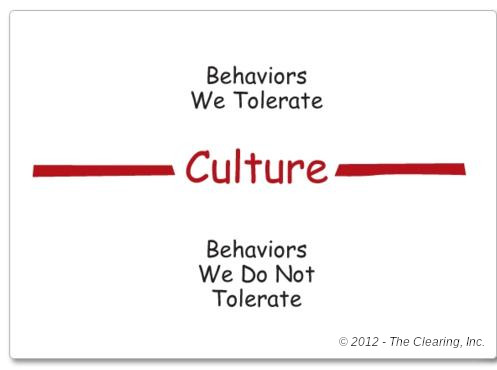Powerful CULTURES are explicit and intentional. Group members are empowered to say, “This is how we do things.” Leaders foster intentional CULTURE.
As a group travels along the way of any great adventure, the most powerful determinant of behavior is the line drawn by the team members themselves to separate what they’ll tolerate from what they won’t. This demarcation is termed CULTURE. There are dozens of books on CULTURE, but the PRIME principle is extremely simple and very powerful.
The line of CULTURE is always being drawn. Some groups are intentional, active and explicit about their CULTURE. They rely on principles and values to guide decision-making and action steps. Other groups are more passive and allow their CULTURE to evolve. The latter groups typically institute policies and codify rules into a formal system that requires inspection, verification, and enforcement by outside entities. The result is rarely as powerful as an intentional CULTURE.
For an intentional CULTURE to thrive, people must talk about what they’ll tolerate, and be willing to call out others when they cross the line. Group members must be willing to declare, “This is how we do things” or, “We don’t do that!”
Modeling intentional CULTURE is a responsibility of leadership.
IN ACTION
Although CULTURE is made up of many elements, five characteristics are common among high performance cultures:
- They don’t tolerate GOSSIP.
- They know how to forge CONSENSUS.
- Members live in INTEGRITY with one another.
- They don’t tolerate “victim” attitudes. (VICTIM – LEADER)
- They quickly recognize and clean up any BREACH of INTEGRITY.
SO WHAT?
It’s important to make CULTURE explicit at the beginning of any CHANGE or TRANSFORMATION initiative. The group needs to recognize that CULTURE is a living thing; it’s being shaped all the time, whether actively or passively. Everyone has a role in its development, and making it intentional and explicit is a leadership responsibility.

